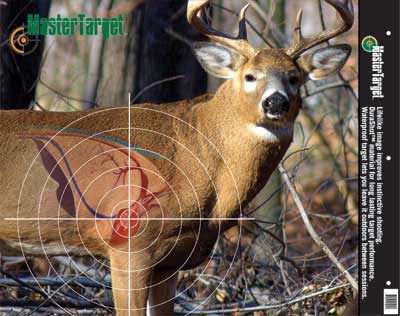


What is “Maximum Point Blank Range” Hunting?

Jack O'Connor discussed what he felt was ethical, confident hunting ranges. Though Mr. O'Connor didn't use the term “maximum point blank range,” that is what he was essentially referring to. Briefly stated, a “Six Inch Maximum Point Blank Range” is where you may use a center of the body hold on your big game animal and your bullets trajectory does not exceed three inches high or three inches low during its trajectory to target. Another way of phrasing this is “Center of Body Hold Range.”
Chuck Hawks, his article “The Kill Zone of North American Big Game Animals,” has listed estimated vital area circle diameters. They are as follows.
Pronghorn
antelope = 8.5"-9"
Small deer = 8.5"-9"
Medium size deer = 10"-11"
Large deer = 11"-12"
North American wild sheep = 12"-13"
Mountain goat = 13"-14.5"
Caribou = 14.5"-15.5"
Elk = 14.5"-15.5"
Moose = 18"-21.5"
As you'll readily notice, the “Center of Body Hold Range” using a six inch kill zone circle does allow for hunting accuracy, meaning both shooter error, some animal movement, and a small amount of wind drift. This is what makes the “Six Inch Kill Range” a reasonable, practical, and ethical approach on everything from pronghorn, small deer, and up.
Here are the approximate ranges at which the bullet drops 3" (our maximum point blank range) when zeroed for a maximum 3" rise for typical factory loads for a few popular cartridges. These are calculated for a scope mounted 1.5" above the center-line of the bore.
.243
Win/100 grain = 283 yards
.257 Wby Mag/120 grain = 317 yards
.270 Win/130 grain = 294 yards
7mm Rem Mag/150 grain = 305 yards
.30-30 Win/150 grain = 225 yards
.308 Win/150 grain = 267 yards
.30-06 Spfd/180 grain = 263 yards
.300 Win Mag/180 grain = 290 yards
.338 Win Mag/225 grain = 274 yards
The advantage of hunting this way is huge. Forget ballistic reticles, forget holdover, forget knob turning, forget what power your riflescope is set on. Your job is simply to get within the Center of Body Hold Range” of your animal, use proper judgment as to the best moment, and hit the switch. For “quadraped grass-eaters,” they don't always pose at exact ranges, nor are they always perfectly broadside. An angling or slight raking shot does indeed cut down the exposed vital area. Again, the Six Inch Center of Body Hold allows for a small amount of reduced kill zone due to animal posture, even on a pronghorn.
When you anticipate hunting in conditions with unpredictable winds, like canyon areas, an easy solution is to just use a “Four Inch Center of the Body Hold” trajectory. For substantially larger animals, elk and moose, you can likewise use a “Nine Inch Center of the Body Hold” trajectory to increase your effective range with no loss in confidence. It is an easy way to hunt and the fastest way to take a big game animal without unnecessary hesitation or any needless complications.
Copyright 2011 by Randy Wakeman. All Rights Reserved.

Custom Search

